Guide to vegetable garden pests: Identification and organic controls
Guide to vegetable garden pests: Identification and organic controls
Guide to vegetable garden pests: Identification and organic controls every, vegetable gardener faces pest issues from time to time, and learning how to manage the little leaf-munching menaces without using synthetic chemical pesticides is an essential step in growing a healthy, productive garden. To help gardeners with this task, we’ve put together this easy-to-use guide to vegetable garden pests.

-
Caterpillar Force (Non-Systemic Insecticide)₦5,999.00Rated 3.25 out of 5 based on 4 customer ratings
To make our guide to vegetable garden pests both user-friendly and straightforward, we’ve included essential details about 15 of the most common – and destructive – veggie garden pests and lots of info on how to protect your garden from the damage they cause. Use the photos and descriptions to help you identify the culprit, then implement the useful prevention techniques. If these preventative tips don’t solve your problem, move on to employing the listed physical control methods. As a last resort, we’ve also included our favorite organic product controls for each garden pest. Apply them with caution and only after carefully reading the label. Use this guide to vegetable garden pests to grow a high-yielding, gorgeous, organic vegetable garden.
Our guide to vegetable garden pests: 15 of the worst offenders
Asparagus beetle (Crioceris asparagi)

Recognizable proof: Adult asparagus creepy crawlies are 1/4″ long. They’re dark with velvety yellow spots and a red imprint directly behind their head. The hatchlings are armed force green, grub-like animals with a pimple.
Plants influenced: Asparagus scarabs just feed on asparagus plants.
Depiction of harm: Both hatchlings and grown-ups bite asparagus lances and greeneries. Serious invasions can cause total carmelizing of the foliage and a decrease in the force of the following year’s harvest.
Precaution measures: Adult asparagus insects overwinter in nursery flotsam and jetsam, so cut down greeneries and tidy up fallen leaves in the asparagus fix in the pre-winter.
Actual controls: Protect arising lances with drifting line cover and keep it set up all through the reaping season. Search for little, dim eggs on lances and hand crush them. Thump the hatchlings off the plants every day with a delicate brush – once on the ground, bugs and other useful creepy crawlies will discover and burn-through them.
Natural item controls: Neem–or spinosad-based items are viable controls prescribed here in our manual for vegetable nursery bothers.
Aphids (many species)

Distinguishing proof: Aphids are little, pear-molded bugs. They can be green, yellow, earthy colored, red, dark, or dark. There are both winged and non-winged aphids, contingent upon their species and life-stage.
Plants influenced: Aphids feed on numerous types of potential host vegetable plants, including tomatoes, lettuce, kale, and cabbage. Their productive nature makes them sure-finds on each manual for vegetable nursery bugs.
The portrayal of harm: Aphids suck plant juices, causing contorted, disfigured development. They commonly feed in huge gatherings on new plant development or leaf undersides.
-
CONTINENTAL SEED LETTUCE 10GRM₦3,500.00Rated 4.25 out of 5 based on 4 customer ratings
Safeguard measures: Promote helpful ruthless bugs by including a great deal of blooming plants with little blossoms in the nursery. Become familiar with utilizing advantageous bugs as nuisance control here.
Actual controls: You can eliminate aphids from plants by showering them off with a sharp stream of water from the hose. Hand-crunching aphids are simple, or cover plants with drifting column cover to shield them from creepy crawlies.
Natural item controls: Use agricultural oil, insecticidal cleanser, or neem-based insect sprays to dispose of testing aphid pervasions.
Cabbage worms (Artogeia rapae)

Recognizable proof: Imported cabbage worm caterpillars are 1″ long and light green with a weak yellow stripe down the back. Grown-ups are white to yellowish-white butterflies with up to four dark spots on the wings.
Plants influenced: All individuals from the cabbage family, including cabbage, broccoli, kale, cauliflower, radish, turnip, kohlrabi, and Brussels fledglings can succumb to cabbage worms.
Depiction of harm: Cabbage worm caterpillars bite openings in leaves and blossom bunches. They can cause total defoliation if pervasion is extreme.
Safeguard measures: Hang aviaries in nursery as flying creatures appreciate eating cabbage worms.
-
Hybrid Oil Palm Seedlings ( Tenera Varieties)₦1,200.00Rated 3.75 out of 5 based on 4 customer ratings
Actual controls: Cover vulnerable plants with skimming column cover from the hour of planting until gather as host plants don’t should be pollinated to be beneficial. Hand-picking the caterpillars is additionally viable.
Natural item controls: Bacillus thuringiensis (Bt)- based bug sprays work extraordinary, as does spinosad, and hot pepper wax.
Carrot rust fly (Psila rosae)

ID: Adult carrot rust flies are little, sparkly dark flies with an orange head and legs. The hatchlings are minuscule, beige-shaded worms. In spite of the fact that this irritation isn’t found in each manual for vegetable nursery bothers, it’s getting more risky for some landscapers and has the right to be highlighted.
Plants influenced: Adult flies lay eggs close to numerous vegetable yields, including carrots, celeriac, parsley, celery, parsnips, and others.
Portrayal of harm: Carrot rust fly hatchlings feed on harvest roots, leaving burrows and scarring behind. As the season advances, the harm develops more noticeable. Roots loaded with passages and scars are the outcome.
-
2 Litres Hand Held Pressure Sprayer Pump Action₦5,987.50Rated 4.75 out of 5 based on 4 customer ratings
Protection measures: Adult carrot rust flies are helpless fliers so turn crops each season. Attempt to pick a site downwind from a year ago’s yield area. Likewise, stand by to plant carrots until late May or early June as that is off the mating pattern of this bug.
Actual controls: Keep carrots and other defenseless yields covered with coasting line cover from the hour of planting until gathering day. Female flies discover their host plants through smell, so between planting carrots and different harvests with onions, garlic, and chives may help limit carrot rust fly egg laying.
Natural item controls: Beneficial nematodes delivered into the dirt close to the carrot crop help control the hatchlings. Types of nematodes in the class Steinernema are best. Apply in the spring as indicated by the bundle directions.
Colorado potato beetle (Lepinotarsa decemlineata)

Distinguishing proof: Adult Colorado potato bugs are 1/3″ since a long time ago, adjusted, with dark and tan striped wing covers. The hatchlings are 1/2″ plump, ruddy purple with lines of dark dabs as an afterthought.
Plants influenced: All individuals from the tomato family are possible hosts, including potatoes, eggplants, peppers, tomatillos, and tomatoes.
Depiction of harm: Both grown-up and hatchlings Colorado potato creepy crawlies skeletonize foliage right down to the leaf veins. They’re regularly found toward the highest point of the plant.
Precaution measures: Adult scarabs overwinter in nursery flotsam and jetsam, so tidy up the garden and pivot crops each year.
Actual controls: Cover plants with drifting column cover and leave set up until reap. You can likewise hand-pick both the grown-ups and the hatchlings.
Natural item controls: Spinsoad-based natural showers are extremely viable, as are neem-based insect sprays.
Cucumber beetles (Acalymma vittata; Diabrotica undecimpunctata howardi)

ID: Adult cucumber insects measure 1/4″ long at development. They are brilliant yellow with spots or stripes, contingent upon the species. Their hatchlings live underground and are only from time to time seen.
Plants influenced: All individuals from the cucumber family are has, including melons, cucumbers, pumpkins, gourds, and squash. Cucumber bugs are additionally now and then found on corn, beets, beans, and different vegetables.
-
AVESTHRIN₦6,500.00Rated 4.43 out of 5 based on 7 customer ratings
Depiction of harm: Adult bugs make little, battered openings in the leaves and blossoms, and communicate bacterial wither.
Precaution measures: Only plant bacterial shrivel safe cultivars, or plant cucumber creepy crawly safe assortments, for example, ‘Saladin’, ‘Little Leaf 19’, and ‘Gemini’ cucumbers, muskmelons, butternut-type squashes, and squashes in the species bunch Cucurbita moschata as they are less preferred by the scarabs.
Actual controls: As with numerous different bugs recorded in this manual for vegetable nursery bugs, cucumber creepy crawlies can be kept off of plants by covering them with drifting column cover, yet for this situation, you’ll need to eliminate the cover when the plants come into bloom to consider fertilization. Mulch powerless yields with free materials like straw or roughage to forestall egg laying.
Natural item controls: Spinosad-based natural pesticides are compelling against the creepy crawlies, however planting safe assortments will consistently be your best line of safeguard.
Cutworms (many species)

Recognizable proof: Adult cutworms are earthy colored or dim night-flying moths. Their larval caterpillars are up to 2″ long and twist into a tight C-shape when upset. The caterpillars are found in the best couple of crawls of soil, and they can be green, yellow, earthy colored, or dim, contingent upon the species.
Plants influenced: Any youthful seedling is vulnerable, however top choices incorporate tomatoes, broccoli, kale, cabbage, and others.
The portrayal of harm: Cutworms cut off seedlings at ground level or support them by biting the external stem tissue. The presence of shriveled or cut-off seedlings is an obvious indicator of cutworms.
-
Drip Tape (For Drip Irrigation | 1500m/Roll)₦100,000.00Rated 4.75 out of 5 based on 4 customer ratings
Safeguard measures: Crop revolution is significant as is securing the stems of youthful seedlings at their base with a collar produced using a bathroom tissue cylinder or aluminum foil settled 1/2″ into the ground.Tilling the nursery in fall to open pupae to predation and cold temperatures is likewise useful.
Actual controls: Bait cutworms with cornmeal or wheat grain paced in indented bowls close to defenseless plants; the caterpillars are pulled in to the granules, yet can’t process them and pass on.
Natural item controls: Beneficial nematodes (species Steinernema carpocapsae or Heterorhabdtis bacteriophora) blended in with water and applied to the dirt are exceptionally useful for controlling cutworms.
Flea beetles (many species)
Flea beetles may be tiny, but they can cause big trouble for eggplants, radish, and other vegetable crops.
ID: minuscule, dark or earthy colored bugs, bug creepy crawlies are 1/10″ long. They move rapidly and bounce like a bug.
Plants influenced: Many various plants are hosts to insect creepy crawlies, however top choices incorporate radish, potatoes, tomatoes, brassicas, corn, and eggplants.
-
SAAF Fungicide ( 250g Sachets )₦11,000.00Rated 3.50 out of 5 based on 4 customer ratings
Depiction of harm: Flea insects make little, circular openings in plant foliage. Their hatchlings live underground and can burn-through plant roots, as well.
Precaution measures: Practice crop pivot.
Actual controls: Place yellow tacky cards above plant tops to bait and trap grown-up bug scarabs. Try not to utilize drifting column cover as it can trap recently arose bug creepy crawlies under it.
Natural item controls: Beneficial nematodes can help control hatchlings when added to the dirt. For grown-up bugs, use garlic oil, hot pepper wax, neem, spinosad, or kaolin earth based items.
Leafminers (many species)
Leafminers leave behind marred foliage. These have attacked beet foliage.
Distinguishing proof: Adult leafminers are uninspiring flies that don’t benefit from plants. Their minuscule, earthy colored or green hatchlings feed inside plant tissues.
Plants influenced: Different types of leafminers feed on various plants, yet for this manual for vegetable nursery bothers, regular host plants incorporate spinach, chard, beets, nasturtiums, and blueberries.
Depiction of harm: Leafminer hatchlings burrow between layers of leaf tissue, making obvious squiggly passages and lines on leaves.
Precaution measures: Cut off leaves where passages are available all through the developing season and throw them in the trash to forestall another age. Harm is only here and there serious enough to make hurt the plant.
Actual controls: Place skimming column cover over helpless vegetable harvests to keep grown-ups from getting to the plants. Remember loads of blossoming spices for the nursery to draw in valuable creepy crawlies to help control the leafminers (more on this later).
Natural item controls: Leafminers are hard to control with items in light of the fact that the hatchlings are between leaf tissue layers. Neem–and spinosad-based items have some impact.
Mexican bean beetles (Epilachna varivestis)
When it comes to vegetable garden pests, one of the most common is the Mexican bean beetle. Here is a larva.
Recognizable proof: Adult Mexican bean insects are copper-hued, ladybug-like bugs with 16 dark spots (see the lower right picture in this present post’s highlighted photograph). Their hatchlings are light yellow with delicate, bristly spines.
Plants influenced: All beans, including green, snap, post, sprinter, lima, and soy, can have these scarabs and their hatchlings.
Depiction of harm: Adults and hatchlings burn-through leaf tissue down to the veins. Infrequently, they likewise feed on blossoms and beans. The hatchlings are regularly found on leaf undersides.
Deterrent measures: Plant bunches of blooming spices as they draw in a useful, ruthless wasp that benefits from the insect hatchlings.
Actual controls: Cover bean plants with drifting column cover from the hour of germination until blossoming.
Natural item controls: Hot pepper wax and spinosad are both valuable for the control of Mexican bean creepy crawlies.
Slugs and snails (many species)
Slugs are among the most despised vegetable garden pests.
ID: Slugs and snails are not bugs, but rather land-staying mollusks. Snails have a shell, slugs don’t. They can be dark, dark, orange, earthy colored, tan, or mottled, and frequently leave an ooze limp along.
Plants influenced: No manual for vegetable nursery vermin is finished without slugs and snails in light of the fact that practically any youthful seedling is a top pick of these irritations. Slugs and snails feed on various types of plants and vegetables.
Depiction of harm: Snails and slugs leave unpredictable openings in leaf edges or focuses. They feed around evening time or on stormy days, so regularly the guilty party is absent during the day.
-
BOOSTRACT₦4,000.00Rated 5.00 out of 5 based on 5 customer ratings
Precaution measures: Water toward the beginning of the day just as slugs and snail favor benefiting from wet foliage. Empower feathered creatures, snakes, frogs, and amphibians in the nursery since these critters eat slugs and snails. Copper strips put around plants forestall taking care of because of a compound response with the sludge delivered by slugs and snails.
Actual controls: Handpick slugs and drop them into a container of sudsy water. Brew traps likewise work, however the lager ought to be discharged and topped off every day.
Natural item controls: Use just slug draws with the dynamic element of iron phosphate; don’t utilize snares produced using metaldehyde or methocarb as both are toxic to pets and other untamed life.
For additional on the best way to control slugs, look at our manual for natural slug control techniques.
Squash bugs (Anasa tristis)
These mating squash bugs will soon lay bronze-colored eggs that will hatch into more leaf-sucking squash bugs.
Distinguishing proof: No manual for vegetable nursery vermin is finished without a notice of what’s likely the hardest veggie bug to control: squash bugs. Grown-up squash bugs are 5/8″, dim earthy colored with smoothed, oval-formed bodies. The fairies are dim and without wings. They frequently feed in gatherings. Squash bug eggs are bronze and laid in gatherings.
Plants influenced: All individuals from the cucumber family succumb to crush bugs, including cucumbers, zucchini, squash, melons, and pumpkins.
Depiction of harm: Adults and sprites suck plant juices with their needle-like mouthpart. Harmed leaves are mottled with yellow and they in the long run turn yellow and kick the bucket. Plants may turn fresh with a serious invasion.
-
ABC SEEDS TOMATO UC82B₦7,500.00Rated 3.25 out of 5 based on 4 customer ratings
Deterrent measures: Plant safe assortments, pivot yields, and use lattices to keep the developing plants off the ground.
Actual controls: Use gliding column covers from the hour of planting until blossoming starts. Eliminate egg bunches consistently with a piece of tape; make certain to check leaf undersides as that is the place where most egg-laying happens.
Natural item controls: Products don’t function admirably on grown-ups, yet fairies can be focused on with insecticidal cleanser or neem.
Squash vine borers (Melittia satyriniformis)
Squash vine borer adults are seldom seen, but this female is ready to lay eggs on the plants.
ID: Adult squash plant drills are red and dark moths that resemble enormous wasps. Their hatchlings are plump, white caterpillars discovered inside the base of squash plants.
Plants influenced: All individuals from the cucumber family are vulnerable, including both summer and winter squash, pumpkins, melons, and gourds. Cucumbers are not regularly influenced.
Depiction of harm: The presence of drills is frequently noted as a fast withering of the plant. Search for opening in the stem tissue close to ground level for affirmation.
Safeguard measures: Wrap a piece of aluminum foil around the base of the plant not long after the primary genuine leaves seem to shield the base of the plant from egg-laying females (more on this procedure here).
Actual controls: Cover plants with drifting line cover not long after planting and leave set up until blooming starts. In the event that drill opening is found before plant kicks the bucket, cut open the stem, uncover the drill, and cover the cut with a hill of soil.
Natural item controls: Inject Bacillus thuringiensis (Bt) into the drill opening with a needle-less needle. You can likewise splash insecticidal cleanser on base of stem week after week to cover any eggs.
Tomato/tobacco hornworms (Manduca quinquemaculata; Manduca sexta)
These tobacco hornworms, and their close cousins the tomato hornworms, are destructive pests in the veggie patch.
Recognizable proof: Adult hornworms are enormous, nighttime moths with earthy colored/dark wings. Hornworm caterpillars are green with white stripes or Vs on their body and a delicate horn or spike jutting from their back.
Plants influenced: Members of the tomato family, including tomatoes, potatoes, peppers, eggplants, and tobacco, are have plants.
Depiction of harm: Tobacco and tomato hornworms give up dim pellets of waste. Harm is eaten leaves, frequently toward the highest point of the plants. The caterpillars feed around evening time and sanctuary in the foliage during the day.
-
Actara Insecticide syngenta₦17,000.00Rated 4.29 out of 5 based on 7 customer ratings
Precaution measures: Plant heaps of blooming spices with little blossoms close to vulnerable plants as these blossoms draw in minuscule parasitic cotesia wasps that utilization hornworms as hosts for their young, in the long run carrying passing to the hornworm (more on utilizing useful creepy crawlies to control bugs in a piece). This is an extraordinary method to forestall the entirety of the irritations talked about in this manual for vegetable nursery bothers.
Actual controls: Inspect plants for hornworms consistently and handpick, yet don’t obliterate any hornworms that have the white, rice-like covers of parasitic wasps dangling from their backs.
Natural item controls: Spray items are only here and there vital as handpicking is more effective. On the off chance that fundamental, Bacillus thuringiensis (Bt) and spinosad are viable.
Whiteflies (Trialeurodes vaporariorum and others)
Whiteflies are annoying vegetable garden pests that suck plant juices and cause distorted growth.
ID: Whiteflies are small, white, moth-like flies. Swarmed plants are frequently covered in tacky honeydew, the waste of the flies. Whiteflies are frequently present in huge numbers on leaf undersides.
Plants influenced: Common whitefly has in the vegetable nursery incorporate yams, tomatoes, peppers, citrus, and others.
Portrayal of harm: Both whitefly grown-ups and fairies suck plant juices, causing powerless plants, yellow leaves, shrink, and in serious cases, leaf drop.
Safeguard measures: Carefully investigate all new plants for whiteflies prior to buying from a nursery. This is a useful thought for forestalling the entirety of the creepy crawlies highlighted in this manual for vegetable nursery bothers.
Actual controls: Hang yellow tacky cards simply above plant tops to catch the grown-up flies and forestall another age.
Natural item controls: Insecticidal cleanser, agricultural oil, neem, and hot pepper wax are generally successful whitefly controls.
More on controlling vermin in the vegetable nursery
No manual for vegetable nursery vermin would be finished without notice of how interplanting your veggie fix with blooming spices and annuals can help limit bother numbers by drawing in the numerous types of gainful bugs that go after nursery bugs. For more data on the most proficient method to utilize these great bugs to fight the bugs in your nursery, look at Attracting Beneficial Bugs to Your Garden: A Natural Approach to Pest Control by Savvy Gardening patron Jessica Walliser.
Also, in the event that you have bugs tormenting your bloom and bush beds as well, we suggest a convenient little field control called Good Bug, Bad Bug to help distinguish and oversee bothers in different pieces of the nursery.

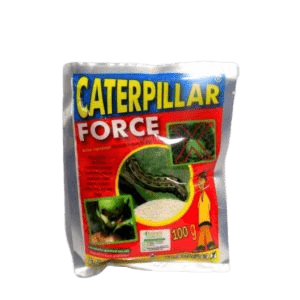
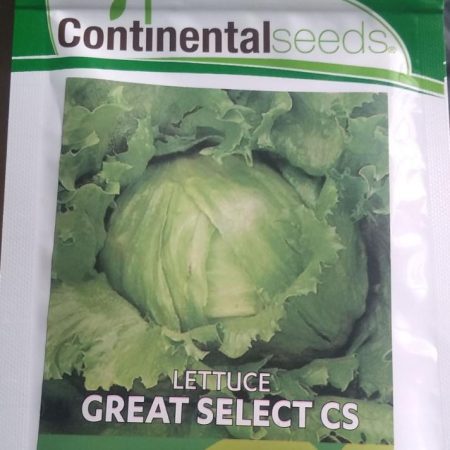
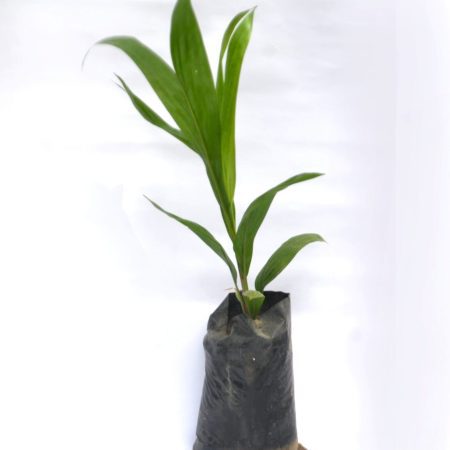
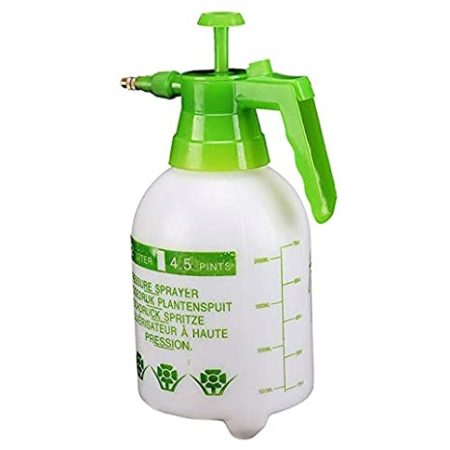
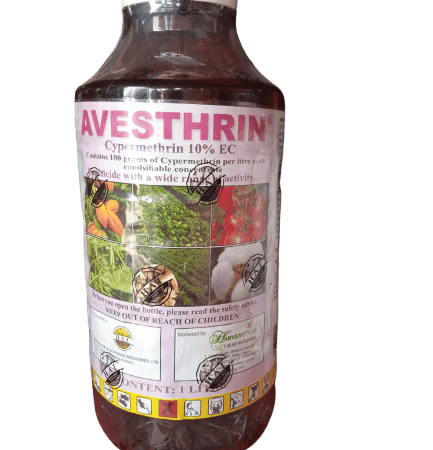
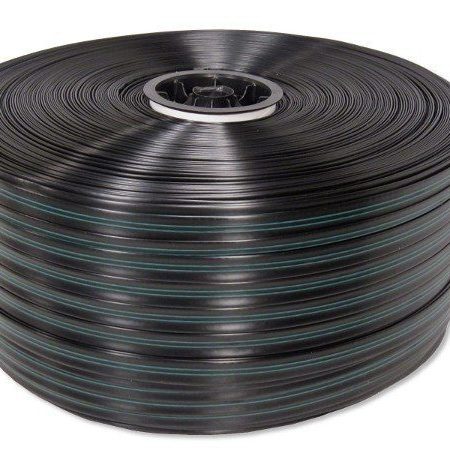

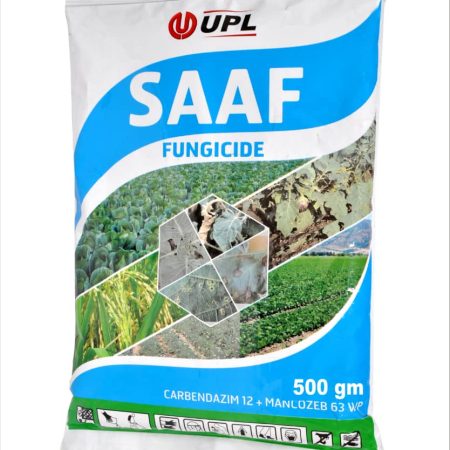



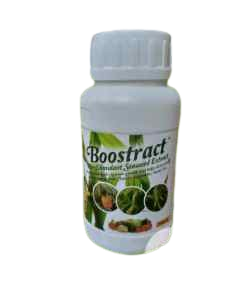

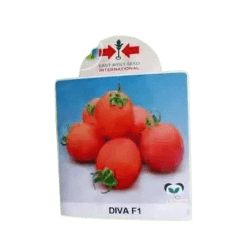


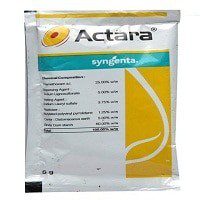


Add comment
You must be logged in to post a comment.